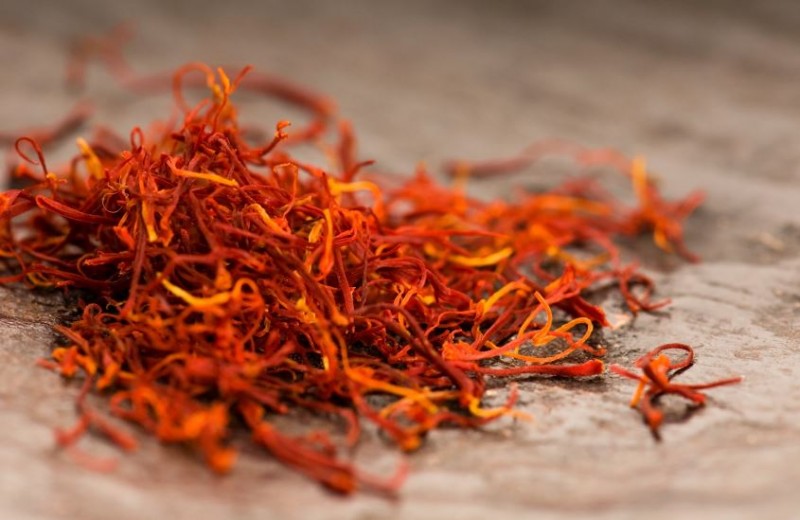
Introduction
Saffron, derived from the flower of Crocus sativus, is widely regarded as the world's most expensive spice. Known for its vibrant color, distinct flavor, and aromatic properties, saffron has a long history of being treasured and sought after by cultures across the globe. In this article, we will explore the fascinating world of saffron, its cultivation, culinary uses, health benefits, and why it commands such a high price in the market.
The History and Cultivation of Saffron
Saffron has a rich history dating back thousands of years. It is believed to have originated in ancient Greece, where it was revered for its medicinal properties and as a dye. From there, saffron cultivation spread across Europe and Asia, finding its way to regions such as Spain, Italy, Iran, and India.
The cultivation of saffron is a labor-intensive process that requires meticulous care and attention. The flowers of the Crocus sativus plant bloom for only a short period each year, and the stigmas must be handpicked with precision. It takes a large number of flowers to produce a small amount of saffron, contributing to its rarity and high price.
The Unique Qualities of Saffron
Saffron owes its distinctive qualities to the presence of chemical compounds such as crocin, picrocrocin, and safranal. These compounds are responsible for the spice's vibrant red color, intense flavor, and captivating aroma. The distinctiveness of saffron makes it a highly sought-after ingredient in various culinary traditions.
Saffron in Culinary Delights
Saffron is a prized spice used in a wide range of dishes around the world. It adds a unique and sophisticated flavor to both sweet and savory recipes. From traditional Indian biryanis and Spanish paellas to Middle Eastern desserts like saffron ice cream, saffron enhances the taste, aroma, and visual appeal of these culinary creations.
The Health Benefits of Saffron
Beyond its culinary uses, saffron has been recognized for its potential health benefits. Studies have shown that saffron possesses antioxidant properties and may have anti-inflammatory effects. It has been associated with improved mood, enhanced memory and cognition, and potential anticancer properties. However, more research is needed to fully understand and harness the medicinal potential of saffron.
Saffron's Role in Traditional Medicine
Throughout history, saffron has played a significant role in traditional medicine. It has been used to alleviate symptoms of various ailments, including depression, anxiety, menstrual disorders, and digestive issues. Its inclusion in traditional remedies highlights the perceived therapeutic properties of this precious spice.
The Global Saffron Market
The global saffron market is characterized by its exclusivity and high value. Iran is the largest producer of saffron, followed by countries like India, Spain, and Greece. The limited supply and labor-intensive cultivation process contribute to the spice's high price tag. Saffron is often sold by weight, with the finest quality threads commanding the highest prices.
Factors Influencing Saffron's Price
Several factors influence saffron's price in the market. The quality of saffron is determined by factors such as color, aroma, flavor, and the presence of any impurities. The region of cultivation, the reputation of the producer, and the demand-supply dynamics also play a significant role in determining the spice's price. Additionally, the presence of synthetic saffron or adulterants in the market can affect its overall value.
Sustainable Saffron Farming Practices
Due to the delicate nature of saffron cultivation, sustainable farming practices are essential to ensure its long-term viability. Responsible farmers employ methods that minimize environmental impact and promote biodiversity. These include organic farming techniques, efficient water management, and fair labor practices. Supporting sustainable saffron farming helps preserve the quality and integrity of this precious spice.
The Future of Saffron
As the demand for exotic flavors and premium ingredients continues to grow, saffron's popularity is expected to rise. However, challenges such as climate change, counterfeit products, and the need for sustainable cultivation practices pose significant hurdles for the saffron industry. Addressing these challenges and promoting transparency will be crucial in securing the future of saffron.
Conclusion
Saffron, derived from the flower of Crocus sativus, remains the world's most expensive spice for good reason. Its vibrant color, distinct flavor, and aromatic properties make it a highly prized ingredient in various culinary traditions. With potential health benefits and a rich history, saffron continues to captivate the senses and delight palates worldwide.
Bastille Day: Celebrating France's National Holiday and Revolutionary Spirit
India's Wholesale Prices Plunge for Third Consecutive Month
Remembering Leela Chitnis: Honoring the Legacy of a Trailblazing Actress